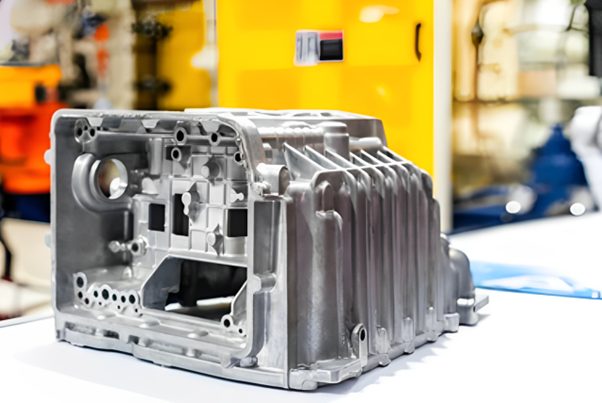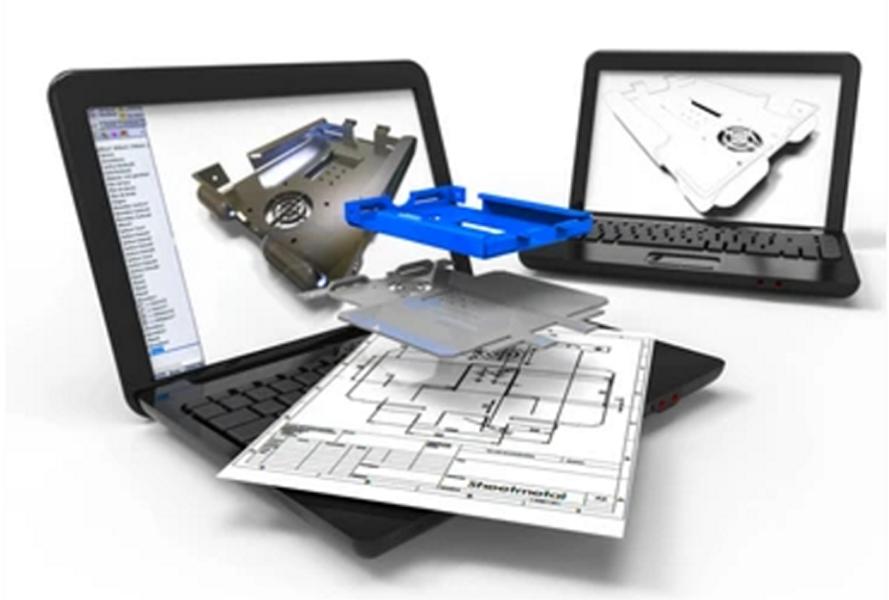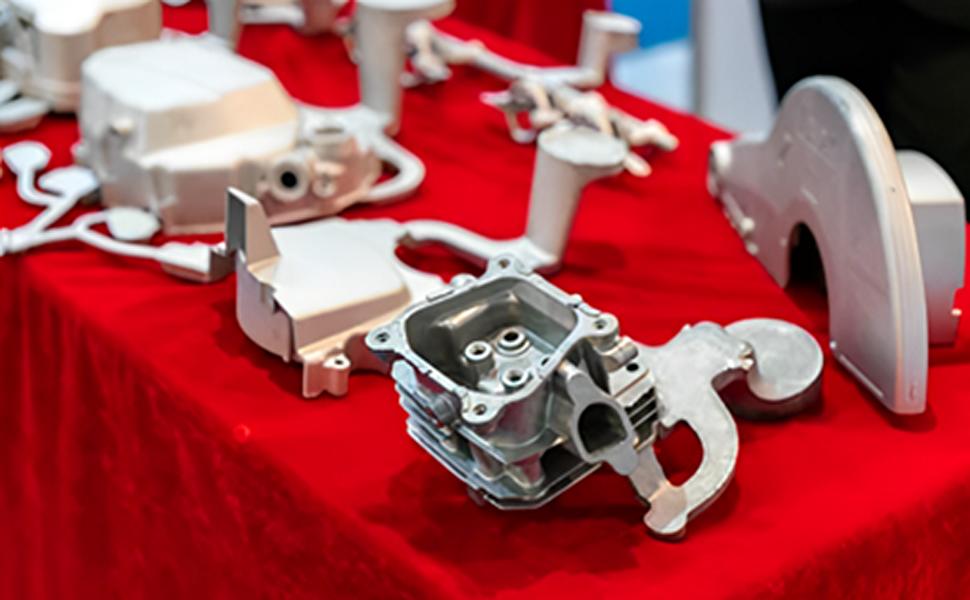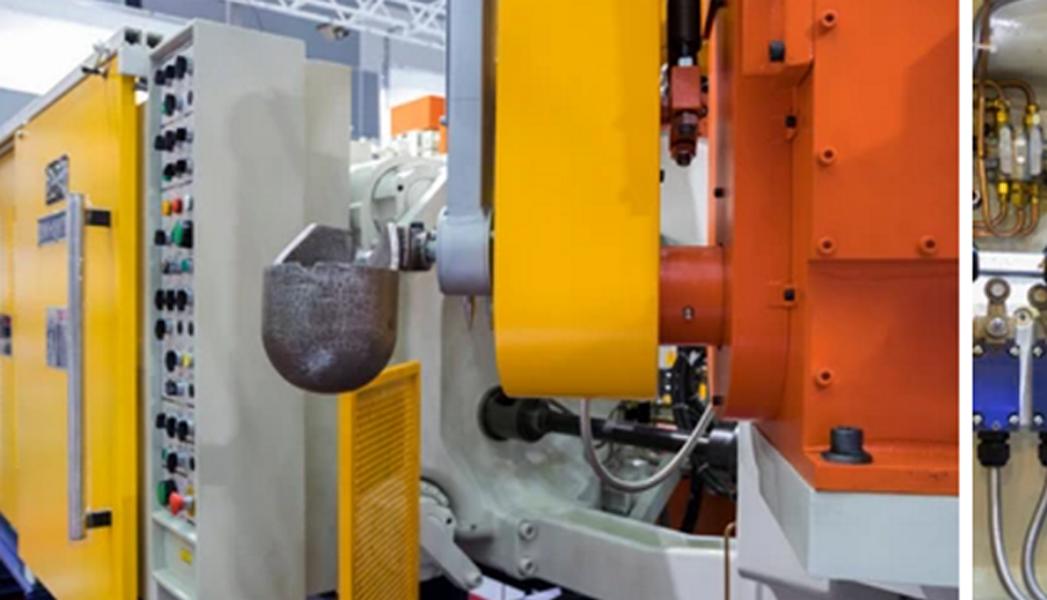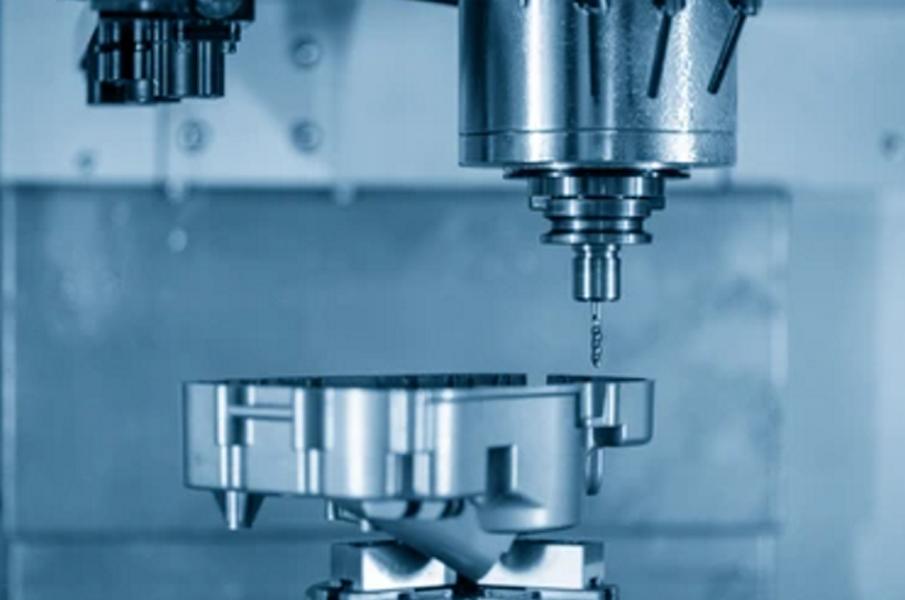Aluminum die casting manufacturer and Services in China
We are a professional aluminum die casting manufacturer and trusted aluminum casting supplier located in China. With more than a decade of experience, we specialize in delivering complete aluminum die casting services — from tooling design and prototype development to mass production, CNC machining, surface finishing, and assembly. Our goal is to help global customers reduce costs while ensuring high quality and reliable delivery.
Aluminum Die Casting Manufacturer & Supplier in China
Welcome to GC Precision Mould Co., Ltd., a Chinese die casting manufacturer and a one-stop manufacturer that services aluminum die casting, zinc die casting, magnesium die casting, precision CNC machining, surface finishing, and assembly. Our team is expert in those areas and can provide tailored solutions to meet your specific needs. Besides this, we can assist with prototypes and any other alloy materials you may require, such as 6061 and 6063 die casting parts.
Our Aluminum Die Casting Services
Our core aluminum die casting services include high-pressure die casting using ADC12/AlSi alloys, precision CNC machining for tight tolerances, and a range of surface treatments (anodizing, powder coating, plating, painting). As an experienced aluminum die casting manufacturer, we support small batch prototypes and mass production with in-house toolmaking, process control and QC inspection (CMM, X-ray, hardness testing). We work with OEMs and contract manufacturers worldwide as a dependable aluminum die casting supplier.
We are not only here to take your orders and deliver the items you’ve ordered from us. We also assist you at every testing level of the process. During the design and development phase, we collaborate with you to implement the most inventive and creative ideas in the manufacturing of your die casting products, meeting your specifications and expectations. We can ensure that you will be satisfied with the final output and that your requirements will be addressed properly in this way.
If you are looking for aluminum die casting manufacturing services, contact us right now, with our high quality aluminum die casting products, it will be surely help you achieve your project goals.
Aluminum Die Casting: A Comprehensive Guide to its Process, Design Tips, and Diverse Applications
The world is fast moving towards innovative and advanced technologies to make metal parts. Several industries demand highly accurate metal parts. In addition, various industries place a high value on time and money. Aluminum die casting plays a very critical role in this domain. It is a fast, efficient, and durable process to convert the metal alloys into the required shape and design. At this place we will discuss the aluminum die casting in detail. Besides this, we will talk about the process, design tips, suitable alloys, advantages, disadvantages, and surface finishing options available in the market.
Based on that information, I hope to help you learn more information about aluminum die casting. if you are looking for aluminum die casting products, then you may have a general dieas.
Aluminum die casting is efficient and economical and offers a wide range of durable shapes and components. After a part is die-cast, little or no machining is required because the process provides extremely close tolerances for even complex shapes. Aluminum die castings can also be easily plated or finished. Aluminum die castings are dimensionally stable and heat resistant.
What Is aluminum die casting?
Aluminum die casting is a unique and popular process to convert sheet metals into the required geometry and shape. This process involves injecting molten aluminum alloy into the die to manufacture the desired metal part. The steel mold or die then receives the molten aluminum. This process takes place under high pressure. It is typically comprised of two halves. They are precisely machined to form the desired shape of the final product. Additionally, it has a wide scope of applications in several industries that require high accuracy and efficiency.
Aluminum Die Casting Process: From Mold Design to Final Delivery
The aluminum die casting process includes a raw casting design with die casting mold, a finished production design involving post-machining, and other surface finishing, such as electroplating, electrophoresis, painting, anodizing, and powder coating. Aluminum die-casting has found several applications across multiple industries. Let’s discuss how aluminum die-casting works. Here is a complete description of each operation that takes place during die casting process.
1. Die Casting Mold Design & Tooling
The die casting tooling design is the first and foremost step in aluminum die casting. This includes the production of molds or dies. These dies determine the final shapes and features of the metal part. The die casting mold design goes through multiple operations. Let’s discuss each process in detail.
- Part Design Analysis: Before designing the die casting tool for making metal parts, engineers must first analyze the dimensions and features of the metal part. It will help them identify the potential challenges. Moreover, it will ultimately enhance the characteristics of aluminum die-casting. This analysis may include checking the draft angles, wall thickness, and gating and venting locations.
- Die or Mold Design: After analyzing the metal part, the next step is to design the die or mold. Here, the engineers create a detailed plan for the production of metal dies. This plan may encompass various designs, such as those for the cavity, cores, slides, parting line, and other features. Therefore, it is essential to take into account all these factors in order to create the desired components.
- Material Selection: Besides effective design, choosing the right material for your metal parts and molds is also very important. If we talk specifically about aluminum die casting, multiple materials can be used to make an aluminum die casting mold. The most common materials may include high-quality tool steels, i.e., H13, DIN 1.2344, 8407, and P20 (for A/B plates). They have excellent hardness, wear resistance, and high thermal conductivity.
● Die casting mold manufacturing: Once the steel material selecftion and die casting tooling design have been completely finished, we move on to the aluminum die casting tooling manufacturing step. It includes the construction of a die or mold. We can use high-precision machining techniques. The most common one includes milling, drilling, or EDM (Electrical Discharge Machining). In addition, we carry out this process with thorough inspection and high accuracy.
2. Melting and Injection
Once the die casting tooling have been manufactured completely, the aluminum die-casting process begins. assembly the die casting mold into the die casting machine, the operators inject the aluminum alloy bars into a furnace. due to the high temperature inside the furnace, these bars melt. This temperature usually lies between 650°C and 700°C (1200°F and 1300°F). It is compatible with the majority of aluminum alloys used in die casting. Just after this, the molten aluminum is allowed to fill the injection system. The injection system consists of a plunger or a hydraulic piston. It applies high pressure to push the molten metal into the die cavity. This is quite a fast process. Furthermore, it is usually carried out within speed limits, ranging from 10 to 100 m/s (30 to 300 ft/s).
3. Cavity Cooling and Solidification
After the molten aluminum entered into the die cavity. Then it quickly cools and solidifies to take the specific shape of the mold or die cavity. Furthermore, the cooling rate has a significant impact on the final product’s quality. the more rapid the cooling rate, the more it will lead to internal defects. These defects mainly include porosity. On the other hand, the slow cooling rate can lead to wrapping or distortion.
Make sure to provide an optimal cooling rate during the aluminum die-casting process. The die can now be equipped with cooling channels. These channels control the water or coolant circulation. So, it will eventually help maintain the uniform temperature distribution in the die cavity. Thus, it provides consistent quality for metal parts.
4. Ejection
The aluminum die-casting machine usually has two halves (the same as the die-casting mold); once the die-casting parts solidify completely in the cavity, then the moving half of the machine opens. The moving half of the machine houses the ejection system. The ejection system in the die casting mold, which consists of ejector plates and ejection pins, makes it easier for the solidified aluminum part to come out of the die cavity. They push the piece out of the die cavity. This is critical for properly ejecting the metal part. Otherwise, it may cause damage to both the metal component and the die. Additionally, the ejector pins and ejector plates are designed properly.They provide a smooth and efficient ejection of metal parts without causing damage.
5. Casting Trimming and Finishing
Once the aluminum die casting manufacturing process is finished, the next process is trimming and finishing the aluminum die casting part. These processes give your metal parts a final look. They remove the extra material attached to the part, i.e., the flash, runner, and slag well. This enhances the aesthetic appeal of the metal part. Besides this, it also increases its efficiency. The trimming process can be carried out manually or automatically. It uses multiple pieces of equipment, like a trim press or CNC machining centers.
6. Casting Machining
After die casting and trimming off the runner and burrs, some of casting parts may require secondary machining to achieve tight tolerances, threaded holes, or special surface features, specially for automotive die casting. Our advanced CNC machining capabilities guarantee accuracy and consistency across every batch.
7. Die Casting Surface Finishing
To enhance durability, appearance, and corrosion resistance, some of aluminum die casting products that needs suface finish, we offer a wide range of finishing options. Depending on customer requirements, components can be anodized, powder coating, painted, or plated, giving the final product both functional and aesthetic value.
8. Final Assembly & Quality Inspection
Before delivery, every part goes through strict quality control and testing to ensure compliance with client specifications. If required, we also handle sub-assembly to provide a complete solution, saving customers time and cost.
At Alu Die Casting, our services go beyond aluminum die casting. We provide complete aluminum casting manufacturing processing solutions to ensure every component meets the highest standards of precision and performance. By combining high-quality die casting tooling with precision machining, surface finishing, and rigorous inspection, we deliver ready-to-use aluminum die casting parts that meet global standards.
Different Aluminum Alloys Used in Aluminum Die Casting
We work with a wide range of aluminum alloys, including ADC12, A380, A360, AlSi9Cu3, and other Al-Si based alloys. Each alloy is selected based on strength, corrosion resistance, weight, and machinability.
Here is a detailed table that will help you know the different alloys, their compositions, and their applications in the diverse market.
|
Alloy |
Composition |
Properties |
Applications |
|
A380 |
Aluminum (Al): 8.5–9.5%, Silicon (Si): 2.5–3.5%, Copper (Cu): 3.0–4.0%, Iron (Fe): ≤1.3%, Magnesium (Mg): ≤0.1%, Manganese (Mn): ≤0.5%, Zinc (Zn): ≤0.5%, Titanium (Ti): ≤0.15% |
– Excellent fluidity and pressure tightness – Good mechanical properties – Superior corrosion resistance – Suitable for intricate and thin-walled parts |
Automotive die casting components (engine blocks, transmission cases), electronic housings, household appliances |
|
A383 |
Aluminum (Al): 8.5–9.5%, Silicon (Si): 3.0–4.0%, Copper (Cu): ≤0.1%, Iron (Fe): ≤1.3%, Magnesium (Mg): ≤0.1%, Manganese (Mn): ≤0.5%, Zinc (Zn): 0.1–0.5%, Titanium (Ti): ≤0.15% |
– Higher strength and hardness compared to A380 – Good fluidity and pressure tightness – Excellent corrosion resistance |
Automotive casting components (brackets, brackets, housings), electrical enclosures, consumer products |
|
A360 |
Aluminum (Al): 8.5–9.5%, Silicon (Si): 0.7–1.3%, Copper (Cu): ≤0.1%, Iron (Fe): ≤0.35%, Magnesium (Mg): ≤0.1%, Manganese (Mn): ≤0.5%, Zinc (Zn): 0.35–0.6%, Titanium (Ti): ≤0.15% |
– High strength and ductility – Excellent pressure tightness – Good resistance to hot cracking |
Automotive components (brackets, engine parts), aerospace components, electrical connectors |
|
ADC12 |
Aluminum (Al): 10.5–13.0%, Silicon (Si): 0.3–0.6%, Copper (Cu): ≤1.5%, Iron (Fe): ≤1.3%, Magnesium (Mg): ≤0.3%, Manganese (Mn): ≤0.5%, Zinc (Zn): ≤1.0%, Titanium (Ti): ≤0.15% |
– Excellent castability and fluidity – Good strength and hardness – Superior corrosion resistance |
Automotive parts (engine mounts, brackets, wheels), industrial machinery components |
|
A413 |
Aluminum (Al): 11.0–13.0%, Silicon (Si): ≤0.6%, Copper (Cu): ≤0.1%, Iron (Fe): ≤0.5%, Magnesium (Mg): ≤0.1%, Manganese (Mn): ≤0.35%, Zinc (Zn): ≤1.0%, Titanium (Ti): ≤0.15% |
– Good castability and fluidity – High strength and hardness – Excellent corrosion resistance |
Aerospace components, automotive parts, consumer products |
Design Guidelines for Better Aluminum Die Casting Results
As an experienced aluminum die casting manufacturer, we work closely with customers during the design phase. Our engineering team provides Design for Manufacturing (DFM) support to reduce cost and improve manufacturability.
The design process for aluminum die casting parts involves precision and careful thinking in order to guarantee the production of high-quality die casted parts that are also cost-effective and capable of being manufactured. Here are some effective tips to improve the overall efficiency of aluminum die-casting manufacturing processes.
What are the Pros of Aluminum die-casting
Aluminum die-casting offers several benefits. Let’s discuss these benefits in detail.
1. Complex Geometries
Aluminum die casting is a very efficient process for producing complex part geometries. They provide high precision and consistency throughout the whole operation. Additionally, it has a wide scope of applications dealing with components with complex details or thin walls.
2. High production efficiency
Aluminum die-casting provides high production rates. It allows for the rapid production of large quantities. This may also include manufacturing parts with fewer post-processing requirements. Moreover, its efficiency helps minimize production lead times and overall costs.
3. Lightweight
We know that aluminum is lighter in weight. This property makes it ideal for applications. This process is widely used in areas where weight reduction is critical. These industries may include automotive and aerospace. Additionally, the die-cast aluminum parts are capable of excellent strength and durability.
4. Excellent thermal conductivity
Aluminum has excellent thermal conductivity. That is why it is the best go-to option for multiple applications that require heat dissipation or thermal management. These may include heat sinks for electronic devices. In addition to this, engine components are also utilized in automotive applications.
5. Corrosion Resistance
The aluminum die casting is compatible with a variety of aluminum alloys. These alloys generally have good corrosion resistance. So, it ultimately increases the durability and longevity of die-cast parts. Moreover, they have wide applications in making metal parts that are particularly used in outdoor or corrosive environments.
6. Recyclability
The most important feature of aluminum die-casting products is that they are highly recyclable. If the metal parts become scrap or defective, they can easily melt down and be reused in the production process. So, this sustainability aspect gives aluminum die casting an environmentally friendly manufacturing option.
What are the cons of aluminum die-casting?
Let’s discuss the drawbacks of aluminum die casting in detail.
1. High Initial Tooling Cost
Every complex part and its geometry require special tooling, which comes with a significant upfront cost. It is also expensive when dealing with large production volumes. Besides this, the initial investment is also suitable for small-scale or low-volume production runs.
2. Limited Material Options
Aluminum die casting is generally restricted to aluminum alloys. This limits the overall choice of materials compared to other casting processes. Moreover, aluminum alloys have a wide range of properties. So, they have specific applications in different industries.
3. Porosity and Defects
Different cooling rates may lead to improper process control. As a result, die-cast aluminum parts suffer from shrinkage or other defects. So, fixing these issues needs additional post-processing steps. They may include machining or surface treatments, increasing production costs.
4. Dimensional Variation
Die casting may result in dimensional variation between parts. Generally, different factors contribute to this variation in dimensions. These factors may include shrinkage, thermal expansion, or contraction. Besides this, tight tolerances may require additional machining or secondary operations.
5. Design Limitations
Although aluminum die-casting provides varying design flexibility, it does not support certain design features. They may include sharp corners or undercuts. These are significant challenges to meet. In addition to this, they require further considerations in terms of tooling. go to advantages and disadvantages of aluminum die casting page to know more.
Diverse Applications of Sheet Metal Die-Casting
It has a wide scope of applications in different industries. Let’s discuss it in detail.
- Automotive Industry: It is mainly used in the automotive sector for producing components, i.e., body panels, chassis parts, brackets, and structural reinforcements.
- Aerospace and Aviation: It is widely used in manufacturing aircraft components. These may include fuselage panels, wing skins, structural ribs, and interior fixtures.
- Consumer Goods: Aluminum die casting is widely used in making consumer goods, i.e., kitchen appliances, home furnishings, and consumer electronics.
- Medical Equipment: In the medical sector, it is widely used for fabricating equipment enclosures, instrument panels, trays, and components for medical devices.
Why choose ALU Die Casting Manufacturer?
ALUDIE is one of the top 10 aluminum die casting manufacturers in China. We offer numerous advantages for providing high production efficiency. We are experts in dealing with lightweight yet durable parts. Our facility is equipped with advanced and modern technology to cater to all your needs. Besides this, we have a team of experts that can deal with simple and large production volumes within time.
Looking for a reliable aluminum die casting manufacturer to support your project? Send us your drawings, 3D models, or samples, and our engineers will provide a detailed quotation within 24 hours.
Conclusion
In conclusion, aluminum die casting is now becoming popular because of its flexibility in dealing with complex parts. It uses molten aluminum alloy, which is then injected into the die cavity. Then it is allowed to solidify. The aluminum metal conforms to the shape of a mold or die. This process offers multiple advantages. Besides this, the parts produced during this process can easily be recycled by melting down the metal part again in the furnace. It has a wide range of applications in various industries such as automotive, aerospace, medical, and military defense equipment.
Frequently Asked Questions
Q1: What is aluminum die casting?
A: It is a metal alloy manufacturing process where molten aluminum alloy is injected into a die casting tooling under high pressure, producing accurate and durable aluminum alloy components.
Q2: What alloys do you offer?
A: We use ADC12, A380, LM25, A365, A383, Zn10si8mg, AlSi9Cu3, and other special aluminum alloys based on strength, corrosion resistance, and application needs.
Q3: Do you provide small-batch production?
A: Yes, we support prototypes, shot runs, and mass production.
Q4: Do you handle die casting surface finishing and assembly?
A: Yes, we provide casting machining, anodizing, powder coating, painting, plating, inspection, and final assembly.
Q5. What benefits does aluminum die casting offer?
A: Aluminum die casting provides multiple benefits. They may include high-dimensional accuracy, complex part geometries, rapid production rates, etc.
Q6. What are common defects encountered in aluminum die casting, and how can they be minimized?
A: There are various common defects encountered during the die-casting process. This may include porosity, shrinkage, and surface defects. These can be minimized through proper design, process optimization, and quality control measures.
Products Gallery








LED Lamp Heat Sink Components, Marine Components, Architectural Hardware Components, auto components, Mechanical Engineering Components, Automobile Parts, LED lighting enclosure & parts, window and door Hardware, Sports Equipment Components, Automotive Components, Electric Tool Parts.
About Us
Established in 1999, GC Precision Mold Co. ltd (Was Aluminium die casting manufacturer (China) Limited ), is now becoming one of the leading global suppliers of high quality die casting parts and machining of nonferrous metal products.
Our production line include but not limited to aluminium die casting, zinc die casting, bronze sand casting, aluminum gravity casting, CNC precision machining. our products were recognized and certified by ISO 9001, we always ready to be your trusted partner and supplier in China.

